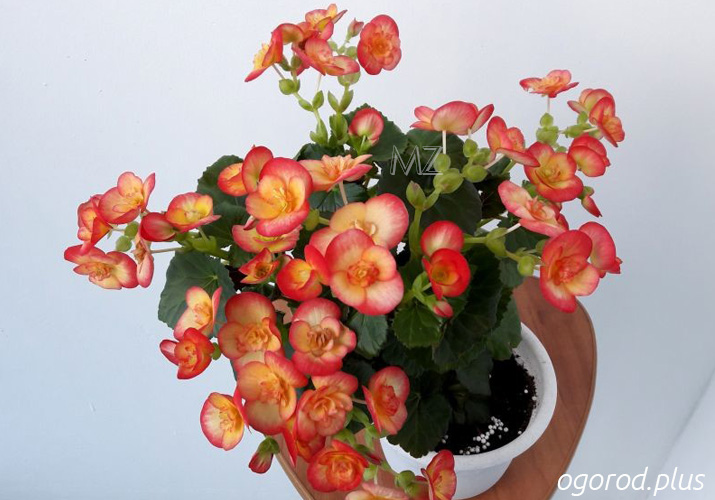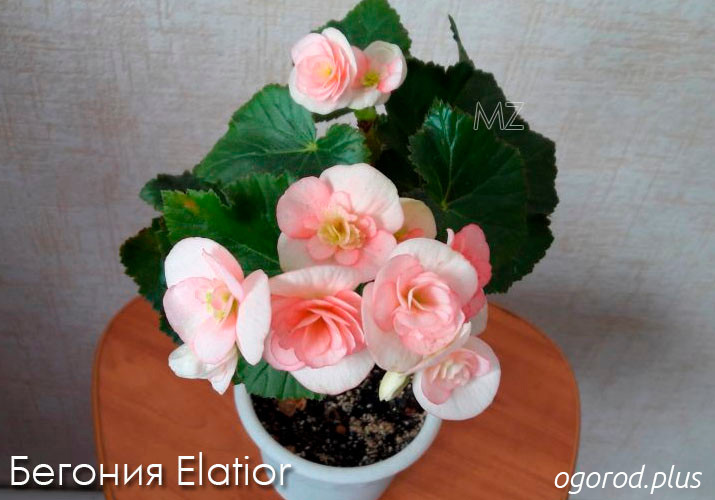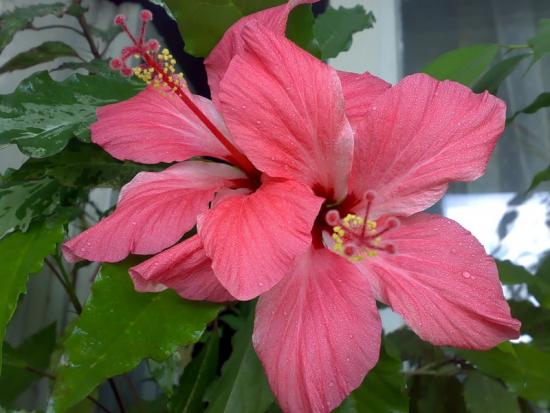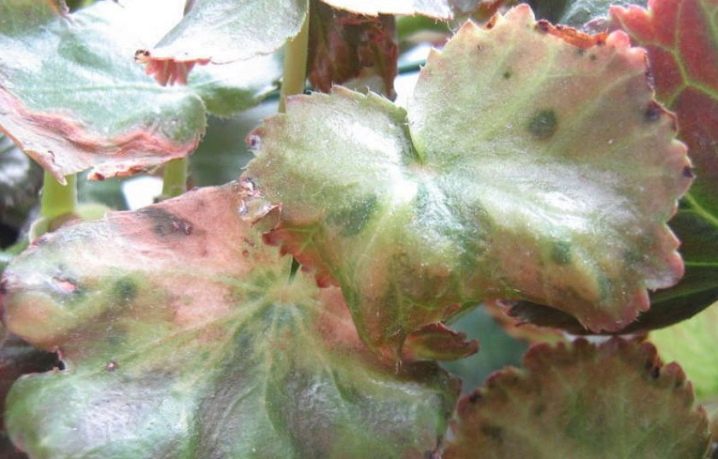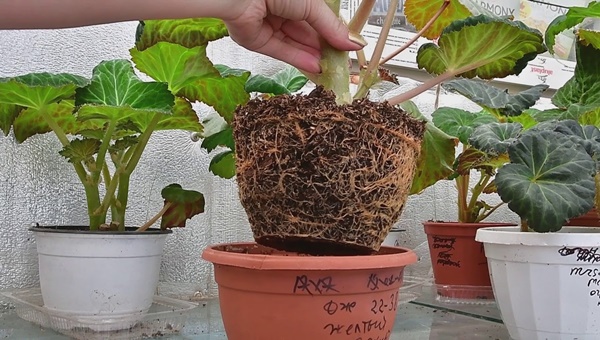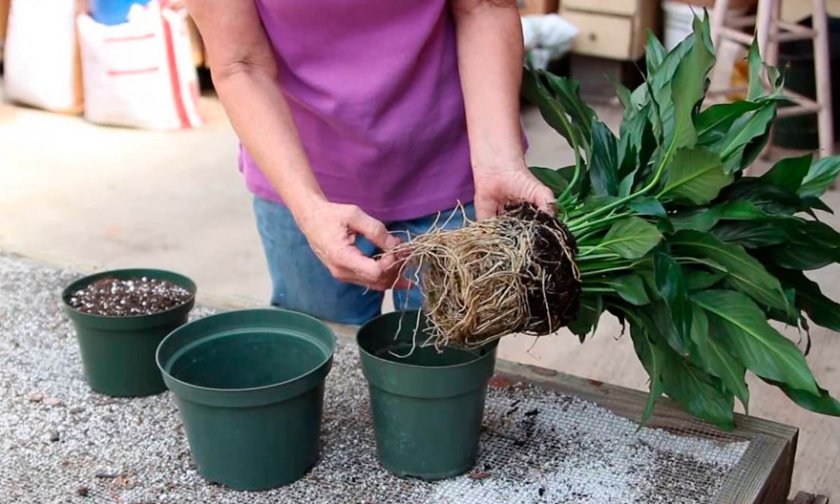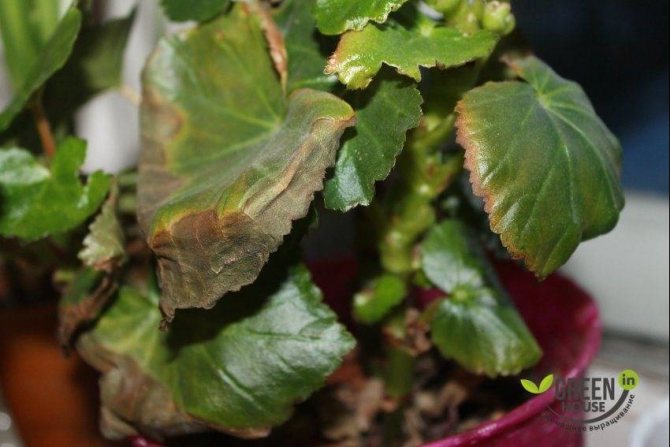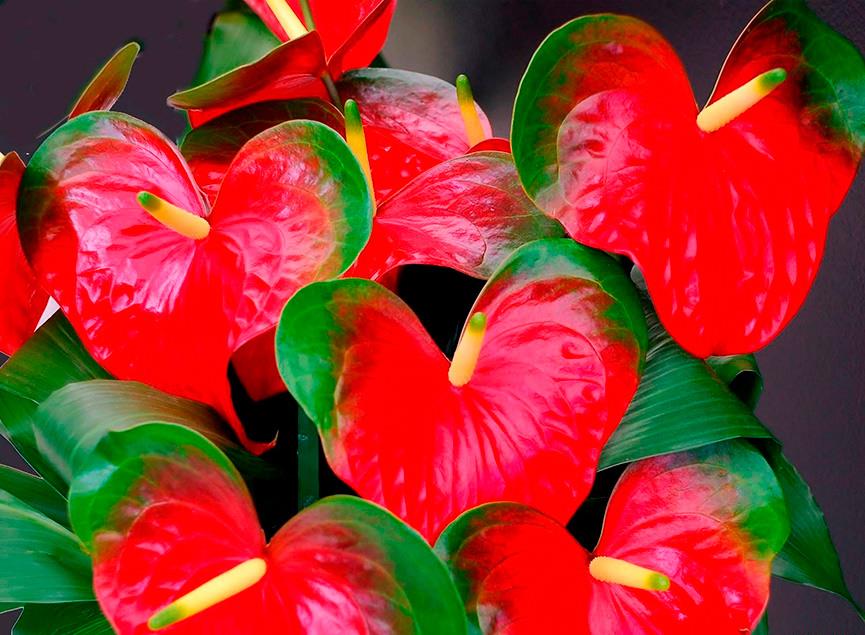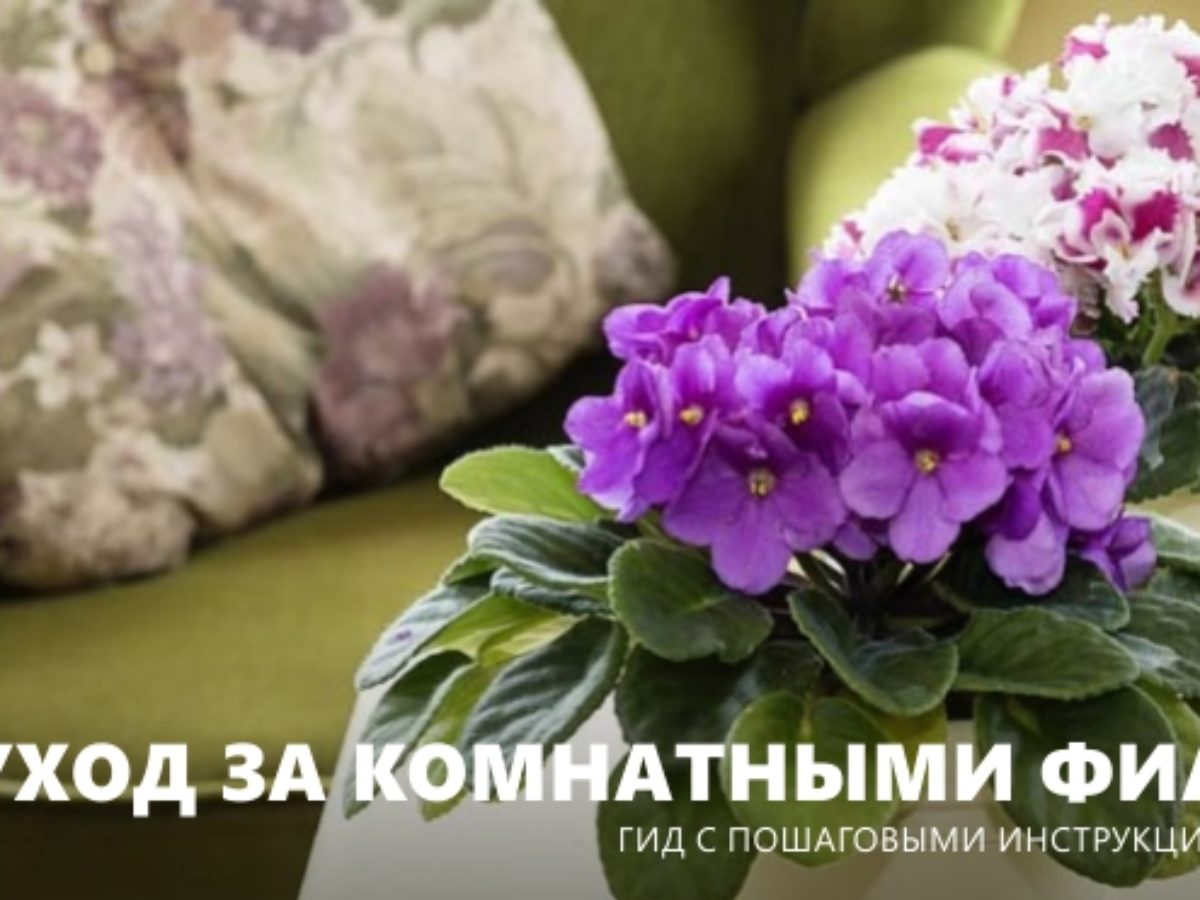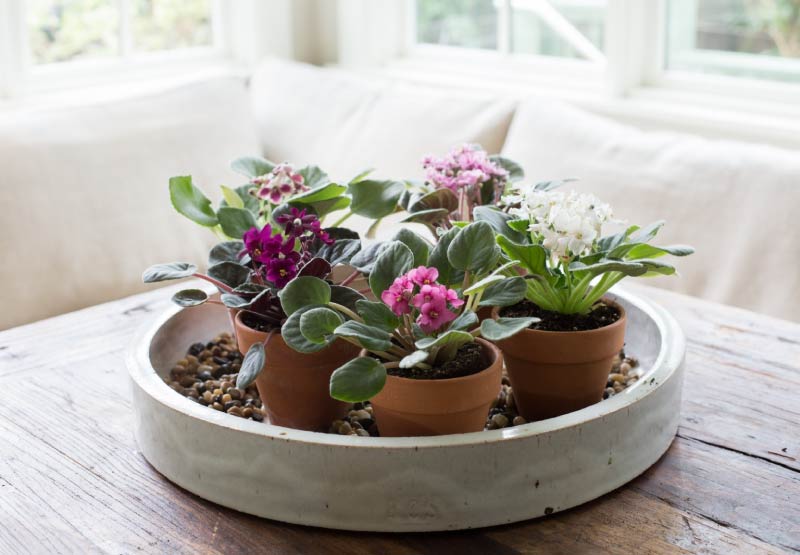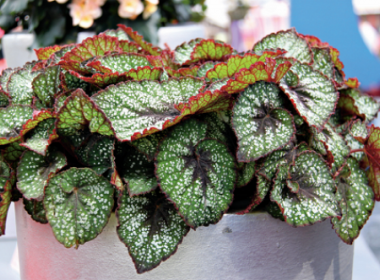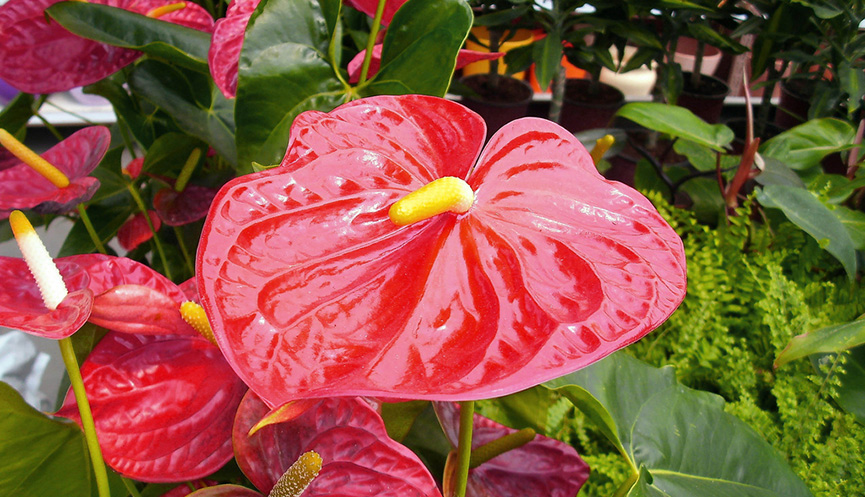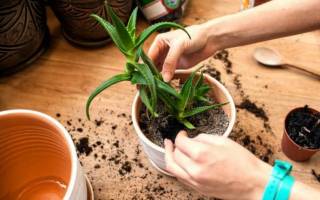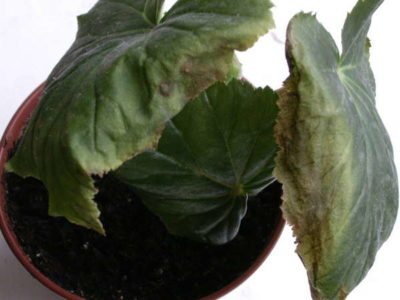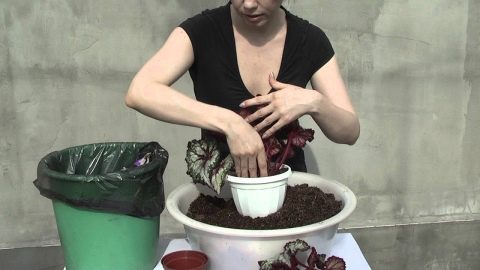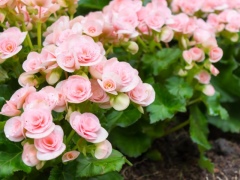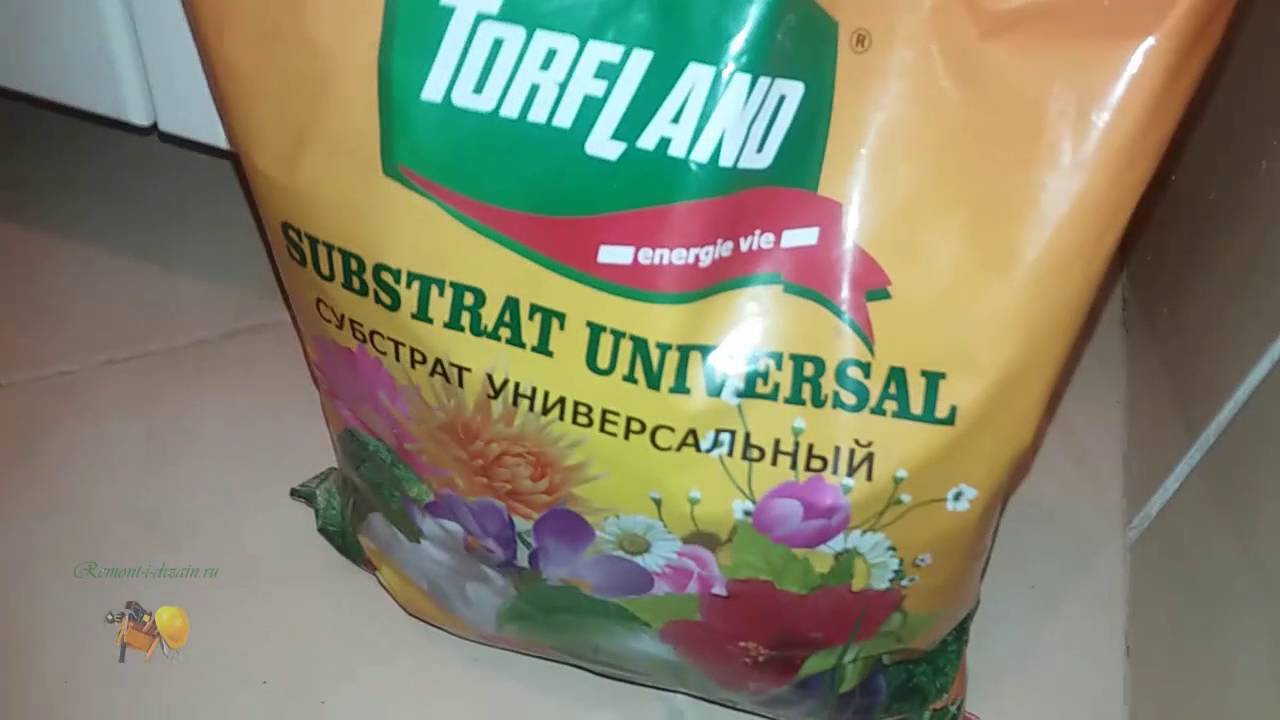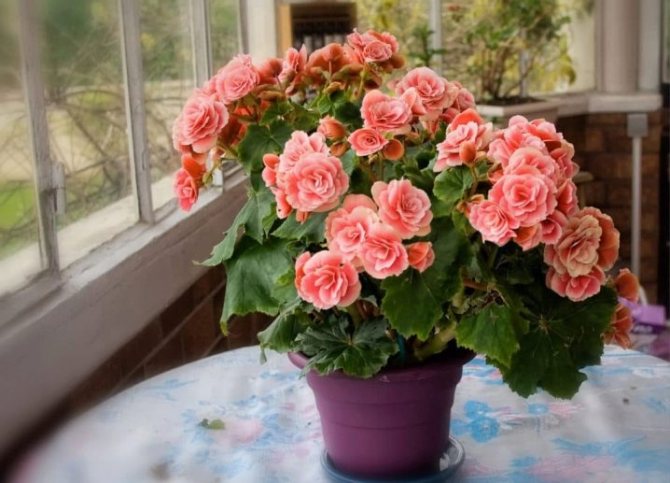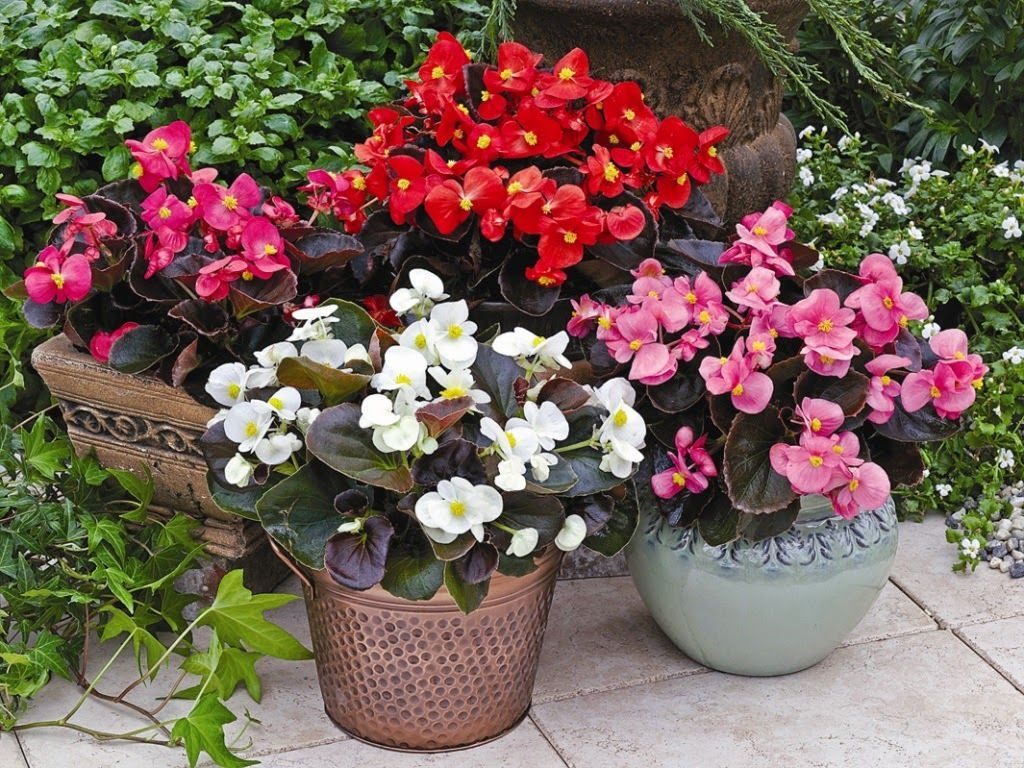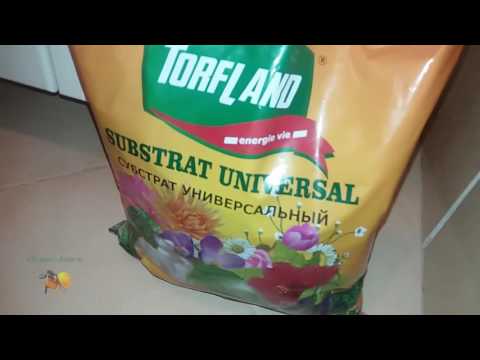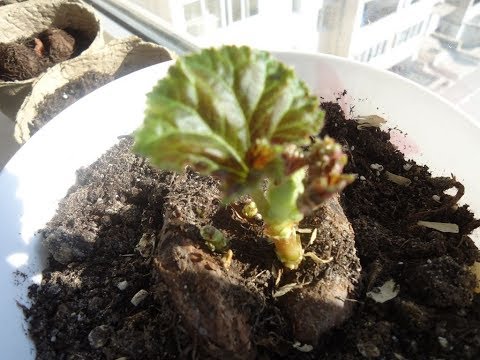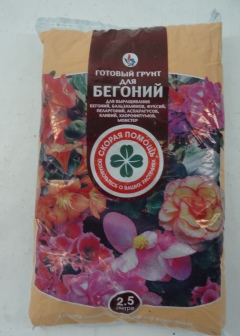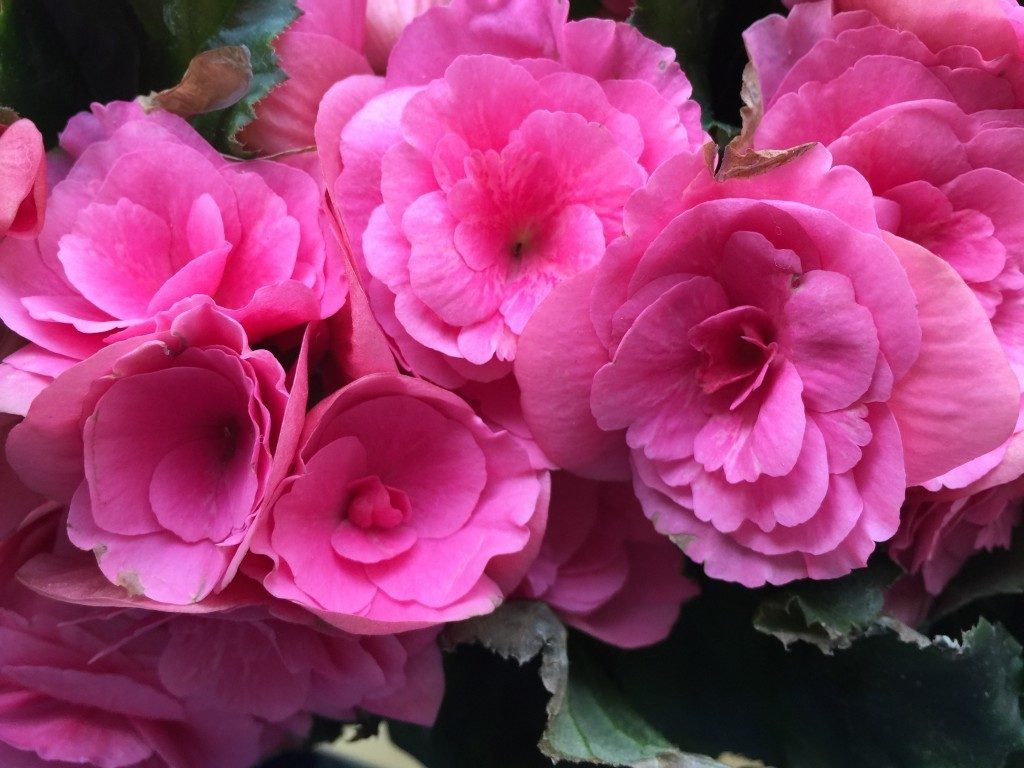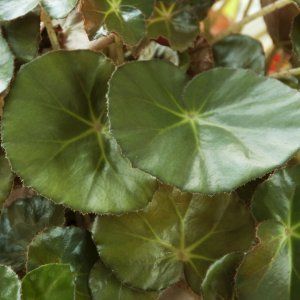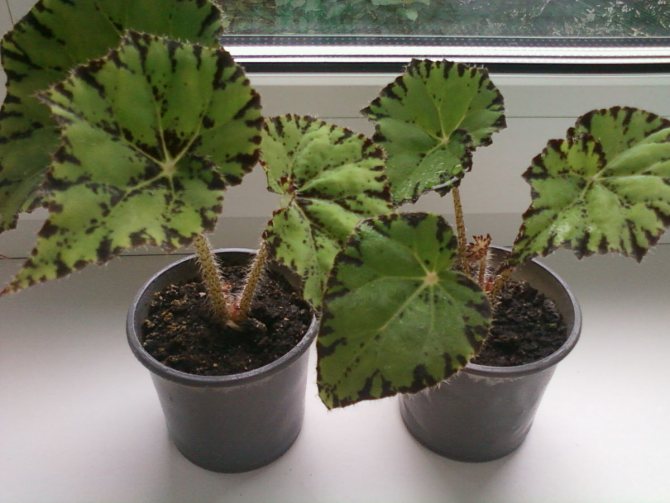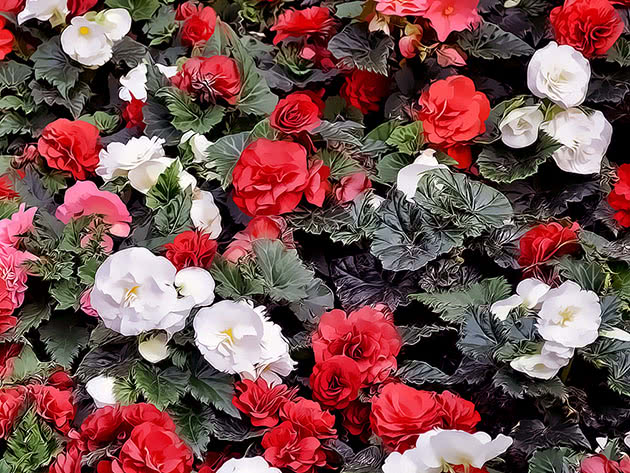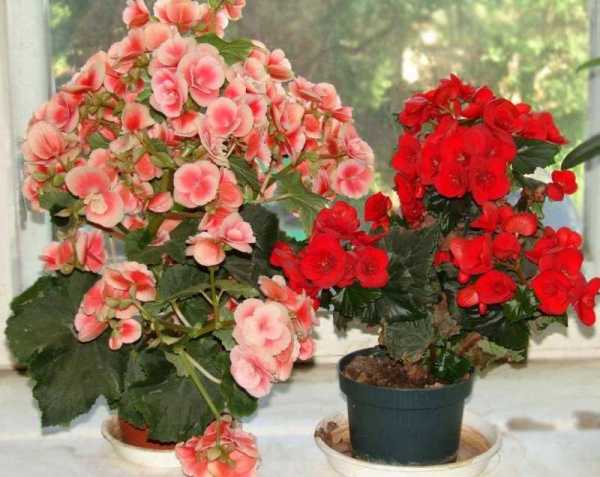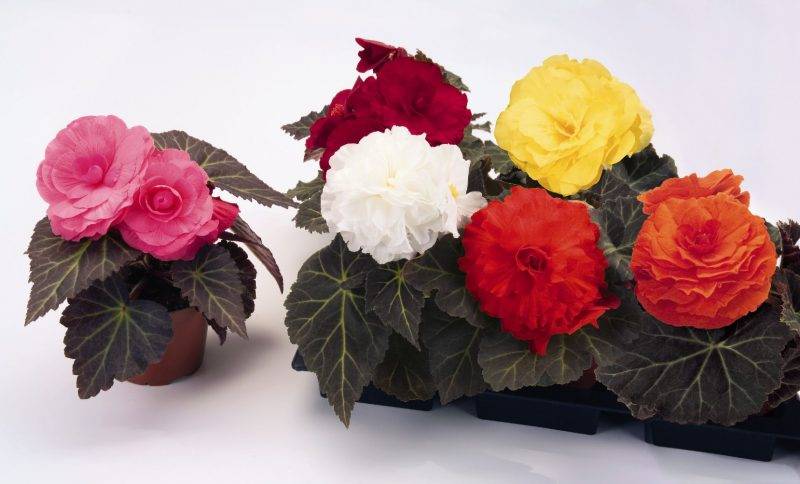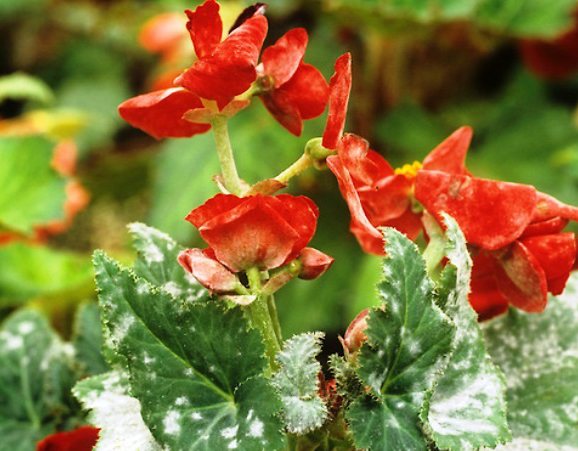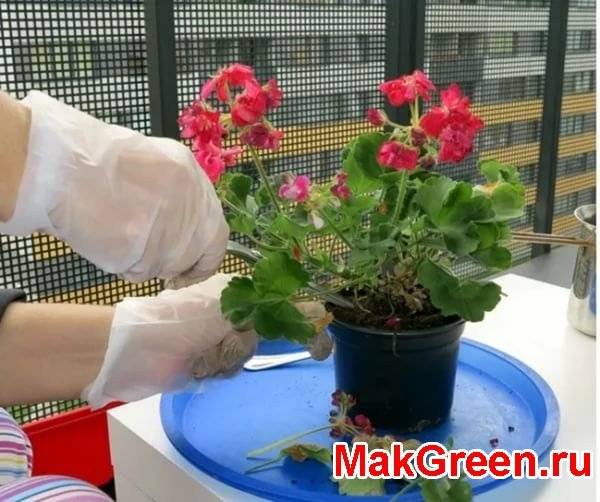Begonia transplant after purchase
Begonias are suitable for growing at home, creating flower arrangements on the balcony and in the garden. The variety of this plant is very large - they are flowering, decorative, deciduous. For your garden or room, you can choose the most suitable option that suits your taste and at the same time complements the complete picture in the overall environment.
Preparing the soil for transplanting
After the purchase, the begonia must be transplanted into a container, if it is a houseplant
When choosing a pot, pay attention to its size - it should not be too large. After the growth of the root system, the plant should be transplanted into a larger pot or divided into several parts, thereby propagating it by dividing
Do this carefully so as not to damage the young shoots and roots.
If you need to transplant begonia after purchase, choose a peat-based soil. Also, this composition should include humus, sod land and ordinary land in equal parts, you can also add a little sand. Drainage must be placed at the bottom of the pot, it is necessary for begonias. You should not immediately transplant, but a few days before it, soak the prepared soil with water and let it brew. Keep the soil moist, but not too wet, so the begonia is more likely to take root in a new place.
The most suitable time for transplanting is spring, especially for flowering begonias. Rather, adaptation takes place and timely flowering is guaranteed. Young plants should be replanted every year, older plants after a year.
Seat selection
Begonia prefers to breed on the sunny side, but it is acceptable not direct sunlight, but a little rarefied light. This pattern can be established by the plant itself, if it stretches too quickly, it means that there is not enough light for it. Dried leaves indicate too much sun exposure and the begonia must be rearranged in partial shade.
Deciduous begonias require less light than flowering ones. Some species can even get along in the bathroom with a small window. If it is too hot on the windowsills of the begonias from the heating radiators, then you can move it closer to the aquarium, which will provide it with the proper moisture. In the room, monitor the humidity of the air, you can reproduce spraying around the plants, but try not to get water on the leaves of the plant. The ideal temperature for begonias is 18-22 ° C; if the temperature is too high, humidifying the air will help.
Care
After transplanting begonias, it is worth providing it with proper care, which consists in timely watering and ensuring moisture. Watering should be done in cases where the topsoil is completely dry, too frequent watering can lead to rotting. During the flowering period, the plant needs additional fertilizing, which can be purchased at any flower shop. In winter, a period of rest begins for begonias, no fertilizers and dressings are required.
Description of the plant
Begonia is an annual or perennial plant of the Begoniev family. Depending on the species, plants have a different shape: from grasses creeping on the ground to tall, erect bushes or semi-shrubs. The begonia leaf is asymmetrical, it can be whole or dissected with wavy or serrated edges.
The inflorescences consist of several small, medium or large flowers.Their color is monochromatic red, pink, yellow, orange, white, or with edging of various shades along the edges of the petals. The time of flowering of the plant is summer and autumn, indoor begonia can bloom until December. The fruit is a box with small seeds inside.
What is needed for a transplant?
Before proceeding directly with the transplant of begonia, it is important to stock up on all the components necessary for this. These include several components
- Pot. It shouldn't be too big and spacious. For young plants, it is necessary to select containers 3-4 centimeters larger than the previous pots in which they are sold in stores.
- High quality and suitable soil mixture. For begonias, a mixture of peat, humus, turf and plain earth will be optimal. All components must be taken in equal proportions.
- Good drainage. In no case should you forget about it if you want to create the most comfortable living conditions for the plant. For this purpose, various materials are used, for example, expanded clay, tiles, gravel or foam cut into cubes.
These are all the necessary components that will be needed to properly transplant begonias into a new container.
Transplant frequency and time
Many gardeners are interested in the question of how often begonias need to be transplanted, what period is most suitable for this. Experienced flower breeding masters argue that the transplant of this plant should be done in two cases.
- Begonia will need to be transplanted after purchase. It will be necessary to do this, but it is not always necessary to rush in this matter. If you leave the flower in a purchased container, then over time it will simply fade. You can't fix this problem no matter what you do. To avoid this, the plant needs to be transplanted into a new pot with fresh soil.
- The transplant is an annual event. It is carried out in order to restore all the necessary nutrients of the begonias, since throughout the year the old soil is inevitably depleted. You must not forget about the annual transplant of this plant, otherwise you will simply ruin it.

The main rule that must be adhered to in matters of transplanting begonia is that you cannot transplant a flower during its flowering. In no case do not violate this condition. If begonia blooms, do not rush. It is better to wait until this process stops, and proceed to the transplant only after that.
Reproduction
Begonia propagates vegetatively (leaf cuttings, stems, division of a tuber, rhizome or bush), or by seeds. The vegetative method is a priority, as it is easier and faster than growing a plant from seeds.
Seeds

- Begonia seeds are very small (several thousand seeds per 1 g), so when sowing they are mixed with flour or starch.
- Seeds are sown in February-March. They are not buried, but placed on the surface.
- Then the container with the seeds is covered with glass or transparent film and placed in a warm, lighted place.
- After emergence, the glass or film is removed.
- When 3-4 true leaves appear in plants, a pick is made in separate small containers.
- Potting is done at the age of 8 weeks.
It is possible that begonia will bloom already in the first year of life, but for this it may require a lot of additional light.
How to grow begonia from seeds, learn from this video:
By cuttings
- Cuttings are cut from the bush, on which there are 3-4 leaves.
- The slices are treated with charcoal to prevent rotting.
- The stalk is planted in a mixture of sand, peat and leafy earth in a 1: 1: 1 ratio.
- Then they are placed in a bright, warm place.
- Water sparingly, the soil should dry out to a depth of 2 centimeters.
Also, for the appearance of roots on the handle, it is placed in a glass of water. After about 4 weeks, the roots will appear.After the roots appear, the plant can be planted in an individual container.
Video on how to propagate begonia by cuttings:
Dividing tubers and bush

Deciduous begonias often reproduce by dividing the rhizome (tuber):
- Divide the tuber with a knife into several parts, provided that each part must have roots and at least 1 shoot or bud.
- The cuts are treated with charcoal and planted in separate pots.
Video about the reproduction of tuberous begonia:
Leaves
Begonia with dense leaves can be propagated by leaf germination. For this:
- The whole sheet or part of it is taken. The main veins on the back of the leaf are cut.
- The sheet is placed on wet sand with the notched side down.
- In the places of the incisions, after about 2 months, roots will appear. After that, young shoots of begonias will appear, which are separated and planted in separate pots.
From the video you will learn how to propagate begonia with a leaf:
In order for begonia to fully delight you with its bright colorful flowers or rich greens, you need to take the time to study all the recommendations for growing and caring. Caring for a begonia is not easy, but when it responds to your concern and blooms with bright colors in full force, then you will understand that all the efforts were not in vain.
Previous
Secrets of growing peperomia Dull-leaved at home: care, reproduction, other nuances
Next
Ornamental Garden decoration - ornamental hydrangea trees and shrubs. Ground cover and other types and varieties
Peculiarities
Before flowering, each plant builds up the strength to carry out this process. During this period, geranium stores nutrients and strengthens the root system.
Flowering is an important breeding stage. The longer this process lasts, the more the plant needs strength. Some representatives spend so much energy that they die after flowering.
The entire flowering period can be divided into several stages. At the first stage, the buds are laid. It is just inside them that the reproductive organs of geranium are formed. The second stage is the emergence of a flower. At the third stage, pollination and the formation of fruits with seeds occurs. A feature of geraniums can be considered almost year-round flowering. In winter, the plant is dormant.
The lack of flowering of geraniums occurs for various reasons. For a plant to bloom, it needs proper care and timely pruning.
In addition, it is important to know about what to do with faded geraniums.
Begonia transplant at home
According to the rules of caring for this flower crop, a young plant should be transplanted once a year. Adult specimens (1 time / 2-3 years).
It is also necessary to plant begonia if:
- the pot has become too cramped, and the roots of the plant have crawled out of the drainage hole;
- bushes grow too densely;
- you need to stimulate flowering;
- flooded the plant;
- begonia is affected by disease or insects;
- after the purchase.
In the latter case, the flower is transplanted only two weeks after it was purchased in the store. Before transplanting begonia, it must go through quarantine, adapt to new living conditions.
An emergency transplant of begonia is made if the plant is flooded or the soil in a pot is of dubious quality.
Begonias are transplanted throughout the spring period, occasionally they can be planted until mid-summer. By the fall, the plants should take root and get stronger.
How to transplant begonia correctly
Before planting begonias, you need to choose a container. It should be larger than the previous pot (3-4 cm). Drainage is poured at the bottom of the flowerpot: expanded clay, pebbles, coarse sand. Then put in charcoal. Fill with prepared or purchased soil. Before replanting begonia, it is well watered. Carefully pull out the stalk
Carefully remove excess soil from the roots.Before planting begonia, immerse its roots in a weak solution of potassium permanganate for 30 minutes (it should be slightly pinkish)
Remove damaged, rotten, moldy fragments. Rinse in clean water, dry a little. They place the bush in a pot, cover it with earth, leaving the distance of the flowerpot to the edges (1 cm.)
Water the plant. Top up the soil after 2 - 3 weeks.
Important! Do not deepen the root collar
How to transplant begonia at home with a tuber
The planting of a tuberous culture is carried out as well as the planting of a rhizome plant. However, the onions are not buried deeply, leaving them practically on the surface. When sprouts appear, sprinkle with earth (layer 3 cm).
Is it possible to transplant flowering begonia - this question is asked by many growers. The only answer is no. It is necessary to wait for the plants to bloom.
Transplanting and growing begonias is not difficult. Even a novice florist can handle it. The main thing is to follow all the rules.
Begonia diseases
At first, beginners in the cultivation of begonias are faced with fungal diseases. This is due to improper watering: insufficient or excessive. In the first case, the plant becomes sick due to dehydration, in the second, due to high humidity and rotting of the roots. Signs of fungus in begonias:
the root neck turns black;
leaves soften, covered with gray or white bloom;
leaves turn yellow, become watery.
For the treatment of the fungus, fungicidal preparations are used to spray the plant and soil.
Viral diseases of begonias cannot be cured. This is a cucumber mosaic, tomato spotting. If such symptoms appear, the plant must be urgently destroyed.
Drying of leaves is most often associated with increased dryness of the air. In this case, you need to put containers with water around the plant for evaporation, moisten the earthen lump and reduce the air temperature to 16 - 18 degrees.
If the begonia freezes, its leaves will turn yellow and wither. The plant needs to be warmed, moved to a warm place, and watering should be reduced. In the cold, roots that are overly flooded with water will begin to rot and the culture will die. Another reason is watering with cold water during the warm season. The delicate root system does not tolerate temperature extremes.
In flowering plants, yellowing can be associated with complete depletion of the soil and chlorosis. It occurs closer to flowering, when begonia draws the last minerals from the soil to form buds.

The culture is urgently fed, preferably with a liquid complex solution, otherwise the plant's immunity will fall, and it will drop the buds.
Subtleties of the process
The subtleties of the transplantation process largely depend on the specifics of a particular type and structure of the root system. But the general rules remain unchanged:
- Begonias need the right soil, specialized soil purchased from a store is best suited, but you can mix the composition yourself (2 parts of leaf humus, 2 parts of peat and 1 part of river sand).
Before planting, the soil must be sterilized, regardless of whether it was purchased in a store or mixed yourself. This will help avoid various diseases that can affect the plant.
- It is necessary to carefully consider the choice of the shape of the pot for planting begonias; due to the peculiarities of the root system, preference should be given to containers whose diameter is slightly larger than the height.
- The correct organization of drainage is of great importance for the healthy development of a plant - the drainage layer should occupy up to a quarter of the total volume of the substrate.
- For easier extraction of begonias from an old pot, a few hours before the planned transplant, you can carry out abundant watering, or immerse the pot in a container of room temperature water for 30-40 minutes.
The roots of begonia are thin and fragile, it is important not to damage them during transplantation, otherwise the rooting process may take much longer.If significant damage is done, the plant may not take root, begin to turn yellow and wither
When is a transplant required?
The roots of begonia develop rather slowly, which is why the flower does not need to be transplanted too often. A healthy plant that has not completely mastered the soil should not be transplanted.
However, there are a number of cases when a transplant is necessary:
- the pot became small for the root system and roots began to peep out of the drainage holes;
- the plant got sick, which is expressed in yellowing of the leaves or its general suppression (read about why begonia leaves curl and what needs to be done here);
- pests have bred in the soil;
- the previous pot is ruined.
If the begonia is small, then the need for transplanting is determined as follows: it is necessary, holding the plant with your hand, turn it over together with the flowerpot and pull the flowerpot up with the other hand. If the roots entwine the entire earthen lump, a transplant is needed.
In addition, it should be remembered that the need to change the soil is also associated with the fact that it is depleted with prolonged use, which creates negative conditions for growing begonias.


